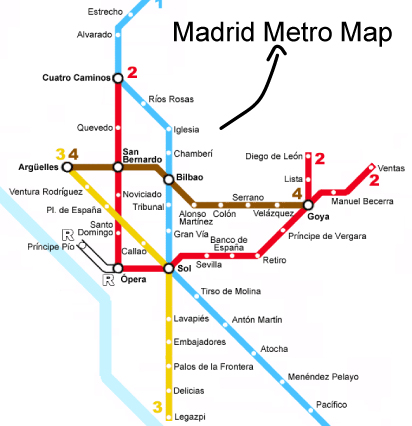Madrid Metro System: Your Complete Guide to Spain’s Capital Transit Network
The Madrid Metro stands as one of Europe’s most extensive and efficient underground transportation systems, serving millions of passengers annually across Spain’s vibrant capital. Whether you’re a tourist exploring Madrid’s historic neighborhoods or a local commuting to work, understanding this comprehensive transit network will enhance your travel experience significantly.
Overview of Madrid’s Metro System
The Madrid Metro operates 12 color-coded lines spanning over 294 kilometers of track, connecting 302 stations throughout the metropolitan area. Since its inauguration in 1919, the system has continuously expanded to become the sixth-longest metro network globally and the second-longest in Europe, making it an essential component of Madrid’s urban infrastructure.
The metro seamlessly integrates with other public transportation options, including buses, suburban trains (Cercanías), and the light rail system (Metro Ligero), creating a comprehensive network that reaches every corner of the Madrid region.
Operating Hours and Frequency
Madrid Metro operates from 6:00 AM to 1:30 AM daily, with extended hours until 2:00 AM on Fridays and continuous 24-hour service on Saturdays. During peak hours, trains arrive every 2-3 minutes, while off-peak frequencies range from 5-15 minutes depending on the line and time of day.
Ticketing and Pricing Options
The metro uses a zone-based pricing system with various ticket options to suit different travel needs. Single journey tickets start at €1.50-€2.00 for Zone A (central Madrid), while multi-trip cards offer significant savings for frequent users. The rechargeable Multi Card allows seamless travel across all public transport modes.
Tourist Travel Passes provide unlimited travel for 1, 2, 3, 5, or 7 days, making them ideal for visitors planning to explore multiple attractions. These passes also include access to buses and suburban trains within designated zones.
Key Lines and Major Destinations
Line 1 (Light Blue) connects Pinar de Chamartín to Valdecarros, serving major tourist attractions including Sol, Gran Vía, and Atocha Station. Line 2 (Red) links Cuatro Caminos to Las Rosas, passing through Opera and Banco de España.
Line 6 (Circular) forms a ring around central Madrid, providing convenient connections between different districts. Lines 7, 8, and 10 extend to Madrid-Barajas Airport, offering direct access for international travelers.
Accessibility and Modern Features
Madrid Metro prioritizes accessibility with elevator access, tactile guidance systems, and audio announcements at most stations. Modern trains feature air conditioning, digital information displays, and designated spaces for wheelchairs and bicycles.
The system incorporates advanced technology including contactless payment options, real-time arrival information, and comprehensive mobile applications that provide route planning and service updates.
Tips for First-Time Users
Download the official Metro Madrid app for offline maps and real-time information. During rush hours (7:30-9:30 AM and 6:00-8:00 PM), expect crowded conditions. Keep belongings secure and be aware of pickpockets in tourist areas.
The Madrid Metro represents exceptional value for money while providing reliable, fast transportation throughout one of Europe’s most beautiful capitals, making it an indispensable tool for both residents and visitors exploring this magnificent city.

